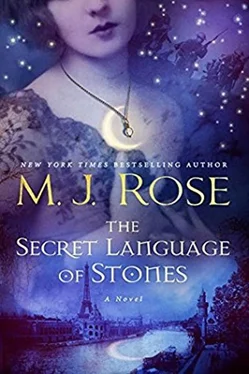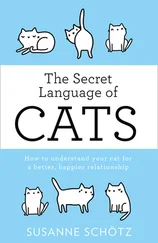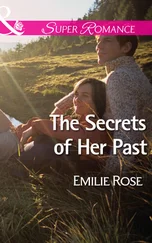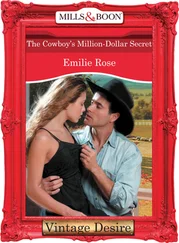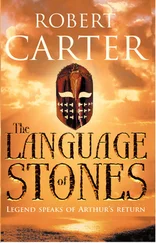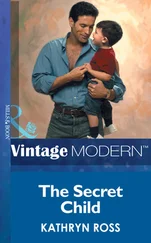“Well, we’re making another gift for her,” Monsieur said. “So let’s go over it.”
This was how Monsieur Orloff mentored me, by involving me in his own pieces. First, he’d show me his design, always a gouache on fine paper from Sennelier’s store. After discussing the piece’s intricacies, he’d explain about his choice of gems and color values. Then I’d estimate the number of stones, and together we’d visit the vault to choose and collect them. Monsieur Orloff often allowed me to make the first selection; then he inspected and either approved or replaced my choices, always explaining why.
When I first came to work for him, he rejected at least three-quarters of what I’d selected, but we’d reached a stage where he rarely found fault with any of my picks. If I couldn’t find stones that were the right shade or size, Monsieur would send me to the gemologist, Monsieur St. Croix, to purchase what we required.
“This is a daunting design,” Monsieur said that morning. “It’s a necklace, yes, but the flowers can be removed from the stem here and here and worn as a clip. And then, I want the petals to be en tremblant .”
I stood by his shoulder and gazed at the gouache study. The new piece comprised two roses on stems, with leaves. The bud and the bloom met in the center, their stems wrapping about the neck. Because Monsieur wanted the petals to tremble, they would be mounted on hidden springs.
“We’ll use rose-colored diamonds, Opaline. As well as pink sapphires. Dark rubies for the shadows and folds of the petals. We want to complement her complexion, so you know the shades to pick. Tsavorites and emeralds for the leaves and brown diamonds for the stems. I’m expecting a client, so why don’t you go down today on your own, find what you think will work, and I’ll join you later and see how you’ve done.”
I nodded, too excited to trust myself to speak. Monsieur had taken me into the vault hundreds of times but had never sent me down alone. Going on my own constituted a large step. In addition to jewelry and gems, the vault contained objets d’art Monsieur was safekeeping for émigrés. He also kept some of the smaller antiques Grigori had bought but hadn’t put on display yet. And I knew from overhearing an argument between Grigori and his father that Monsieur did not allow even his son to visit the vault alone.
“If you’d become a jeweler, you would be going into the vault,” Monsieur said whenever Grigori complained.
“Is that the only thing you can ever say to me? ‘If you were a jeweler’ this… ‘if you were a jeweler’ that…,” he’d spit back, and storm out of the room.
I ached for Grigori. As much as I admired and revered Monsieur, he was too angry at his eldest son for being the only one of his children to not follow in his footsteps. Making jewelry is not just a profession; one needs passion to sustain oneself through the long hours of sitting at a bench, sometimes wearing cumbersome glasses, using minute tools and always being careful and meticulous.
While Grigori possessed a great love of beautiful things and an excellent eye, he was best on the floor, describing with just the right phrases the artistry of a piece. Why it was a worthwhile investment. The joy it would bring.
With great ceremony, Monsieur Orloff handed me his keys to the vault.
After lighting a kerosene lamp to take with me, I unlocked the first door just outside the workshop. Downstairs, at the landing, instead of going right toward my suite, I went left, walked past the bomb shelter down an incline and reached a second locked door.
I unlocked that door and opened it, immediately getting a nose full of the musty scent rising from the quarries. Walking the long twisting hallway to the vault, I held my breath at every turn. As always, I feared what I might hear. Some days the hum of the burial chambers, even though they were far away, was more audible than others. I’d gone down a few times without being assaulted, but most days I heard the dead’s whispers and they frightened me.
That afternoon was one of the worst days. Twice I thought about turning around and running from the din, but the image of Monsieur’s disappointed face kept me moving.
Using Monsieur Orloff’s keys, I opened the next door, which led to a narrow hallway only wide enough for one. The rough-hewn stone walls and floors and thick wooden crossbeams hadn’t been rebuilt since the seventeenth century. In the dark, the lamp’s beam and my form cast more shadows. Twice I tripped on rocks, only barely finding my balance before falling. Heart pounding, I kept going till I reached the very last door.
Made of steel, it was the only modernity in the ancient passageway. Using the last of the keys, I opened the heavy portal and shone my lantern in, setting alight an Ali Baba’s cave of riches.
I never could enter the vault without sucking in my breath. I’d been to the famous gilt Palais Garnier opera house, seen the ornate riches of Versailles, visited the Louvre and examined the cases of ancient jewels and objets d’art, frequented the finest jewelry stores in Cannes and in Paris. None of them was preparation for the Orloff vault.
The long narrow room consisted of a series of archways carved out of stone walls. Each fitted with wooden shelves covered with forest green felt. Altogether, there were five archways on the right wall, three on the back wall, and five on the left. Ninety-one shelves crammed to overflowing with gold and silver jewelry and objets d’art. Platters, goblets, plates, picture frames, pitchers, creamers, teapots, coffeepots, candlesticks, and candelabras. Head mannequins with necklaces of pearls and diamonds and rubies and emeralds and sapphires encircling the painted flesh-colored wood. Velvet cases, some holding rings, others with earrings. Almost nothing was enclosed; everything was on view. I once asked Monsieur why. He said stones need to breathe like we do. They need to be seen and show off their colors; gold needs to shine.
Monsieur was a man of few words. Often curt. Difficult to read. But when he talked about his gems, I saw the lover he must have been to Anna, the poet’s soul living inside his craggy exterior.
Since so few Russian émigrés trusted the banks after living through an overthrown regime, they used La Fantaisie Russe to store their most prized possessions. Inside the vault, a large leather ledger sat on a podium. Every piece was recorded with a drawing, the name of whom it belonged to, and its particulars-weight, height, dimensions. Many of these items were heirlooms, and if I focused on them and touched them with my bare skin, I could sometimes be connected to the spirits of their owners and hear messages. An experience I had come to dread. Since we were supposed to wear white cotton gloves when we handled everything in the vault to avoid scratches, I made sure to keep mine on during the entirety of my visits.
At the far end of the room, I knelt beside the small safe. The enormity of the trust Monsieur placed in me worried me. I turned the tumbler to the right and then the left in the sequence he’d taught me. What if someone was to break in while I was there? I knew a pistol sat on the shelf to the right of the safe. Identical to the one upstairs in the showroom in the top drawer of the desk. Even with my small hands, I could hold it.
When I first went to work for him, Monsieur Orloff took me to the Bois de Boulogne and taught me how to use the gun. After several weeks of practice sessions, he declared me fit to defend the shop if I ever needed to. I was surprised at how brave I became with that small cold metal weapon in hand. In the midst of an angry war, with Paris going dark every night and rumors of spies infiltrating the city, knowing how to protect myself provided at least a kernel of comfort.
Читать дальше
